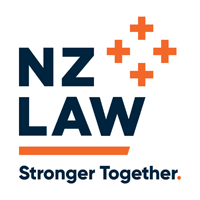Your Resources
Should I get a "reverse mortgage" over my home?
An elderly woman really wanted to remain in her home in her later years, rather than move into a rest home.
However she needed to make some improvements to her home in order to stay there, and did not have the cash to pay for them. Her neighbour mentioned she had obtained a reverse mortgage, so the woman enquired with her lawyer about this as an option.
What is a reverse mortgage?
A reverse mortgage (also sometimes known as a “home equity release” mortgage) is a loan which is secured by a mortgage over the borrower’s home. Unlike most mortgages, there are no mandatory loan repayments until the borrower either dies or moves out of the home.
This particular type of mortgage is designed specifically for people over 60 years old and who have a mortgage-free (or nearly mortgage-free) home.
Generally, banks will let you borrow 15-40% of your home’s current value depending on your age. This money can either be paid in increments or as a lump sum according to your needs. The loan can be spent on anything such as health care, improvements to your home, an income top-up, or even a holiday. While this option may seem appealing, it is important to be aware of all the potential consequences of this type of loan.
Pros
If a reverse mortgage is planned well, it can be incredibly advantageous, particularly for people who want/need more income than what their Superannuation offers them currently and use the loan payments to supplement their income.
One of the biggest selling points of this loan is that you do not need to make repayments, and you do not have to leave your home. If you do not plan to go into a retirement village but need the money to pay for private care this option would be particularly beneficial for you.
While you are accruing interest on your loan, this is not repayable until you sell or move out of your home.
Many New Zealand providers provide a guarantee that you will never go into negative equity with this type of loan. This means that if your loan balance exceeds your home value, neither you or your estate will be expected to pay the difference.
Cons
Throughout the course of the loan, the loan is accruing interest.
Therefore, as you are not making regular repayments on a reverse mortgage, the impact of the interest compounding means that your loan can eat up a lot of the remaining equity in your house, especially as the average interest rate for a reverse mortgage is much higher than normal mortgages.
This loan will also limit how you are able to use your home. Most reverse mortgage terms prevent you from being able to rent out your home, or being able to move into care without selling your home and paying back the loan.
Finally, it is also important to consider that this loan would eat into the inheritance of the beneficiaries of your Will.
Alternatives
Accordingly, we would recommend you only use this option as a final resort and you may want to consider other alternatives such as
- Selling and downsizing your house;
- Subdividing or cross-leasing your section if you have space;
- Renting out your property and moving somewhere smaller;
- Rent out a room or take on a boarder;
- Consider selling a part interest in your house to a family member; or
- Obtain a loan from a family member (at a lower interest rate). You can arrange for this to be repaid via your Will.
If you intend to use the latter two options, it would be important to receive legal advice to ensure that you protect yourself from any nasty shocks in the future about rest home subsidies or disagreements with family.
Ultimately, if you are considering a reverse mortgage, you should talk to your financial adviser or accountant, as well as your family. Before you sign a reverse mortgage you will also be required to take legal advice.
Leading law firms committed to helping clients cost-effectively will have a range of fixed-price Initial Consultations to suit most people’s needs in quickly learning what their options are. At Rainey Collins we have an experienced team who can answer your questions and put you on the right track.








 Top
Top